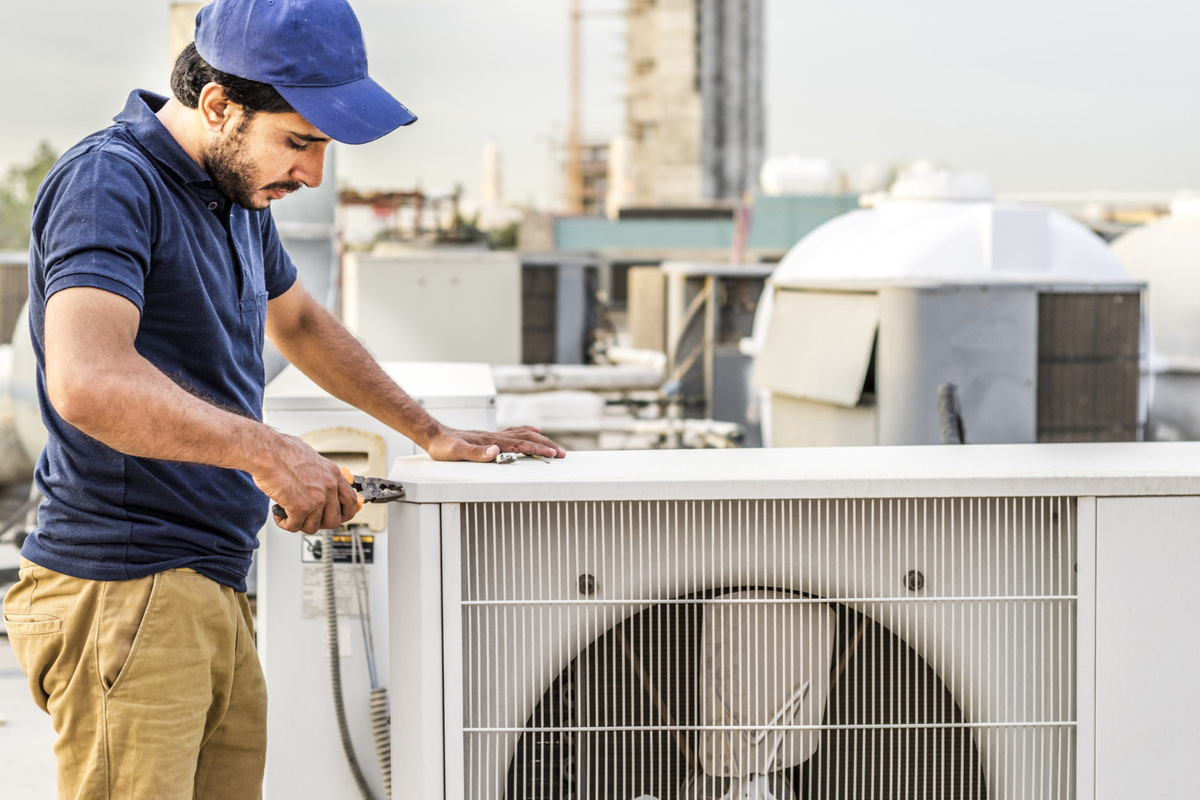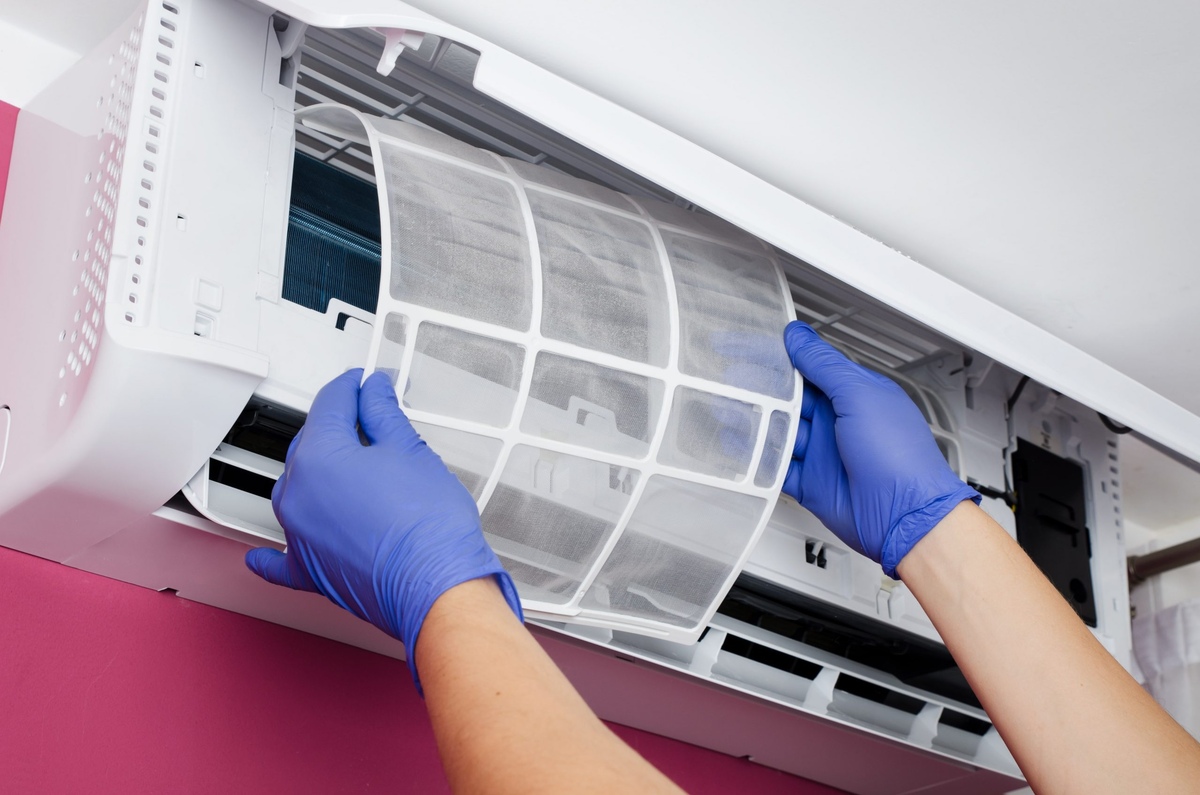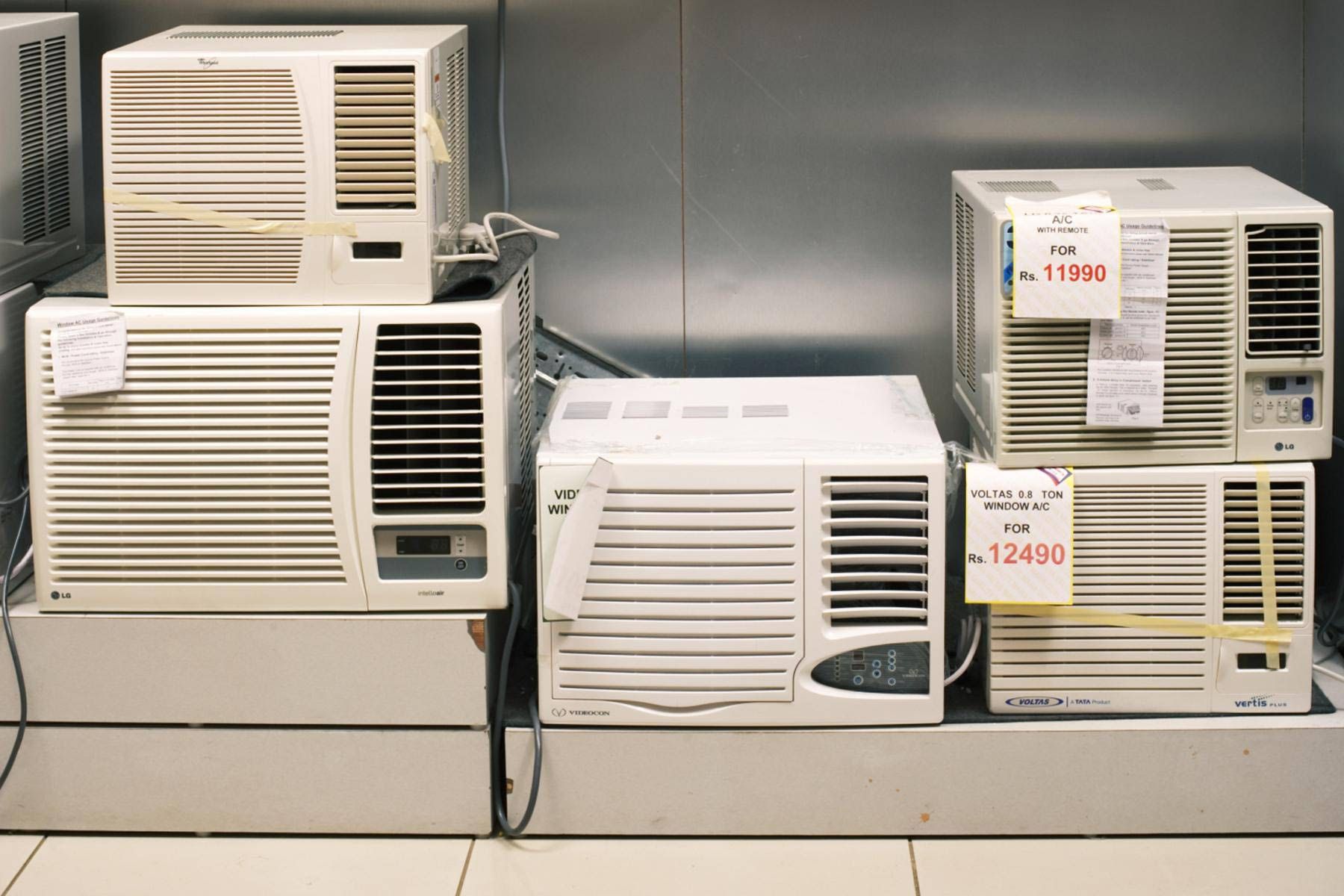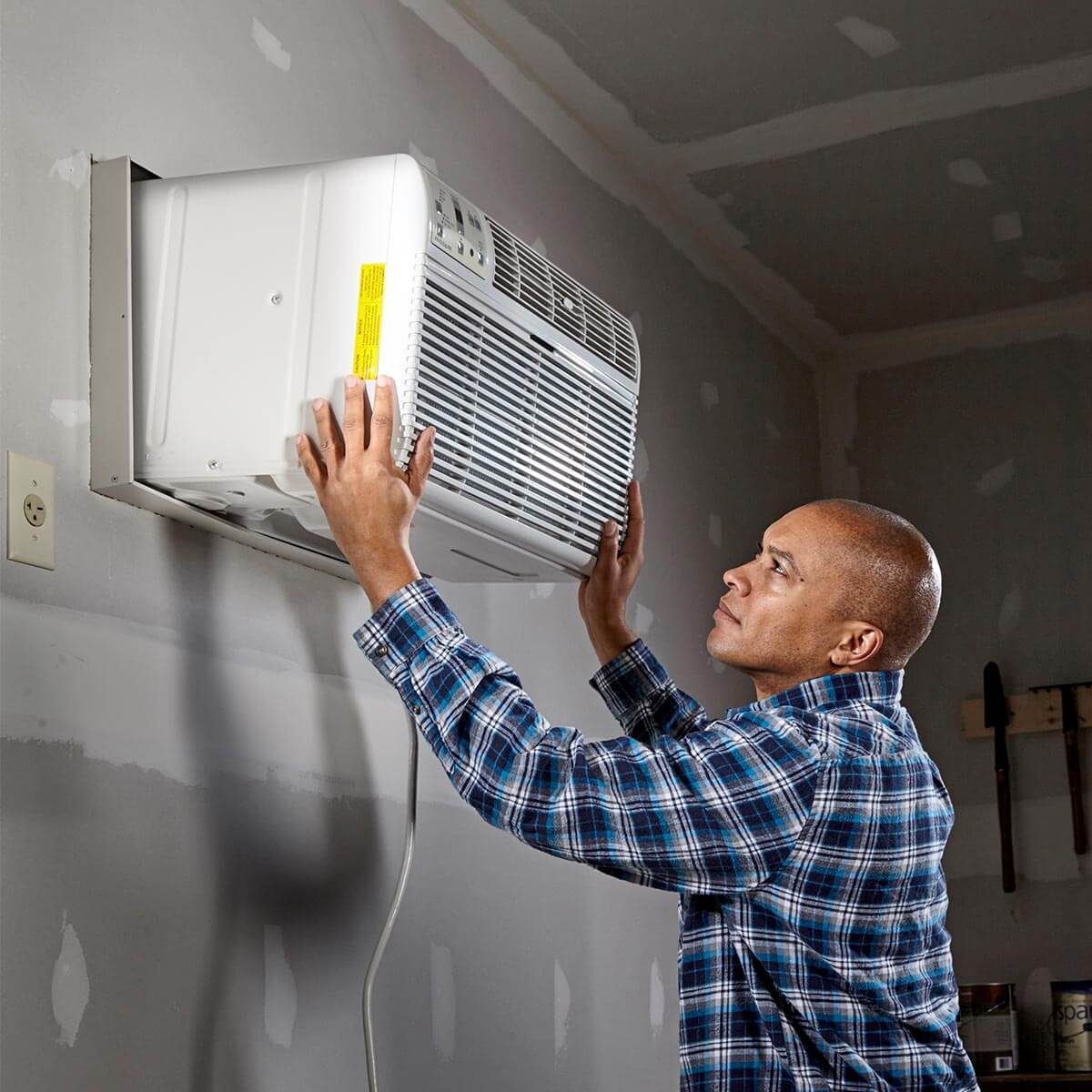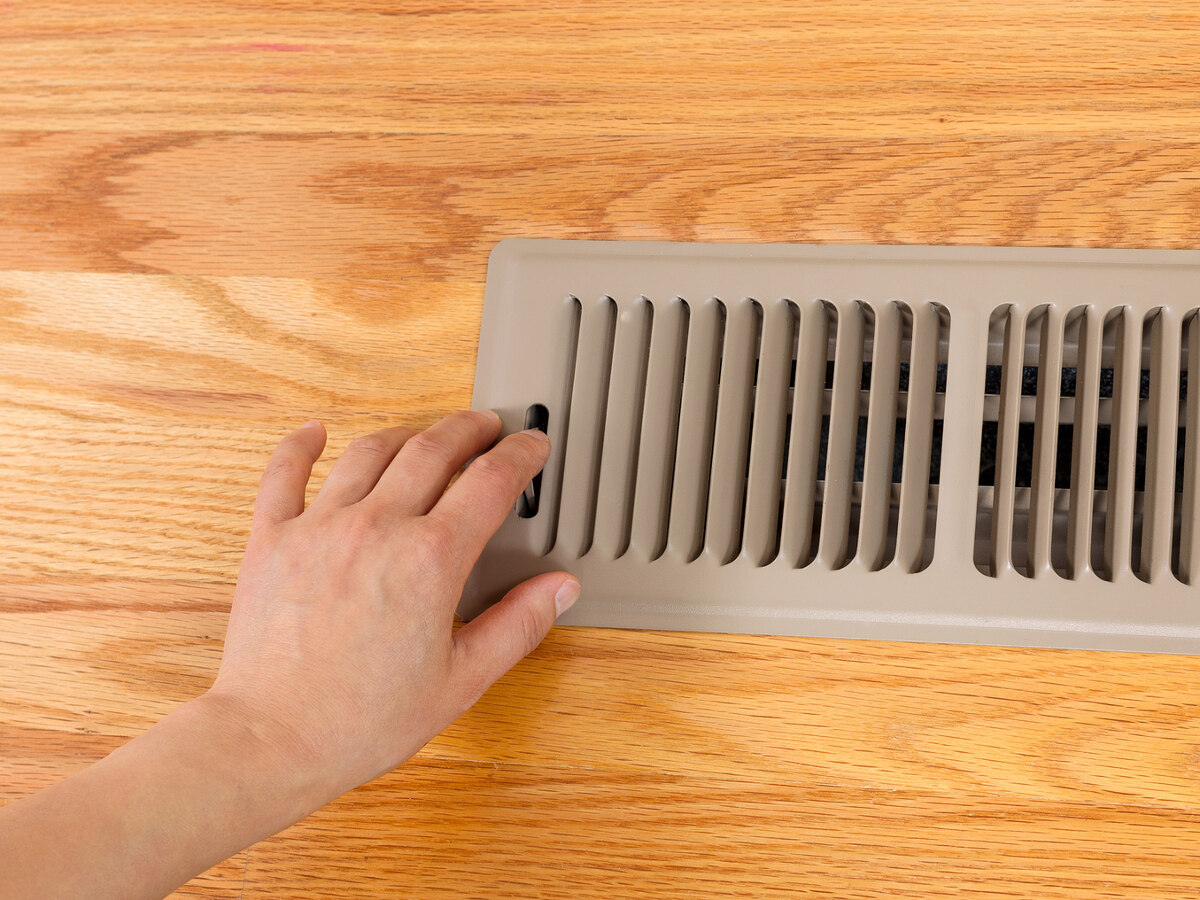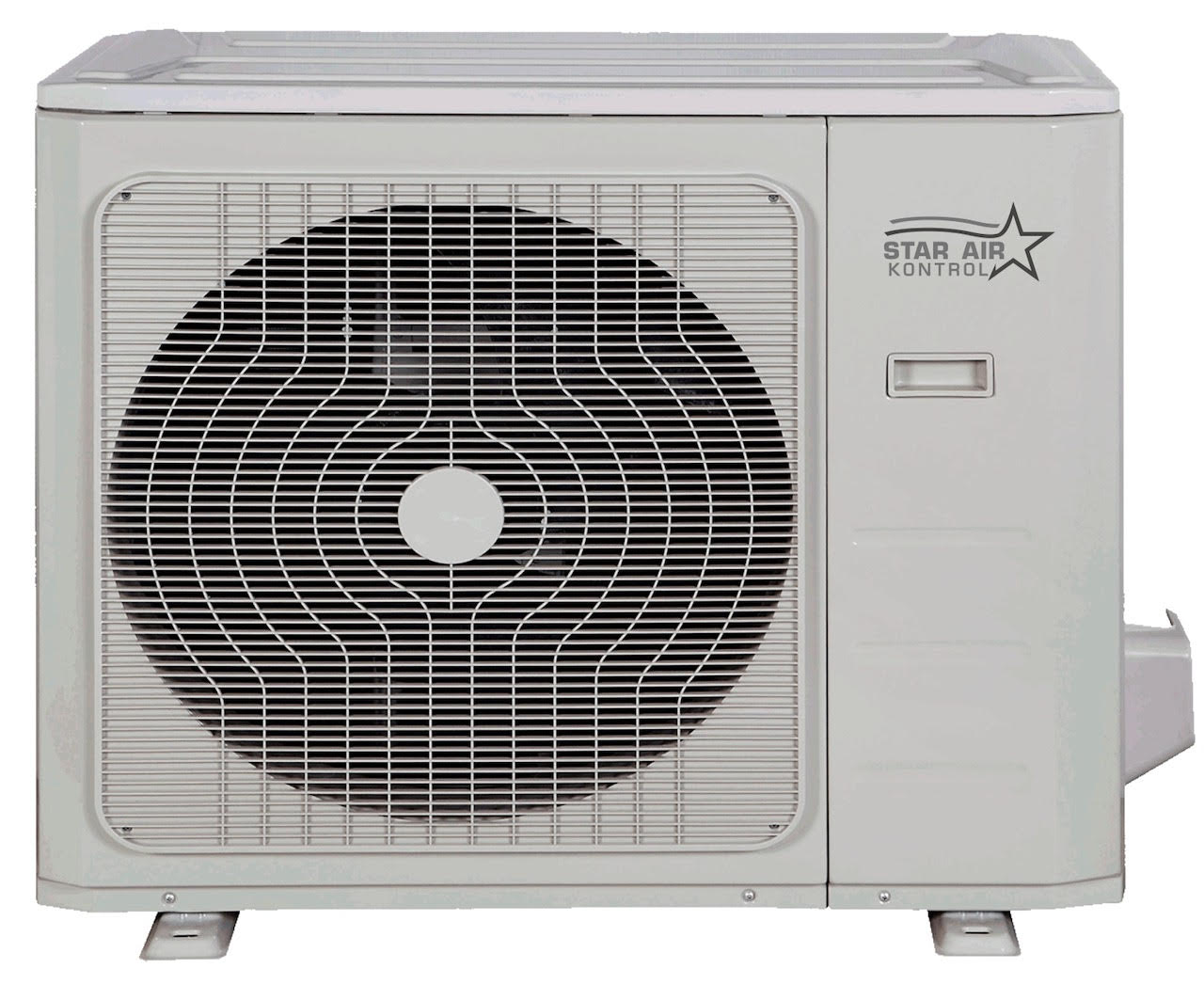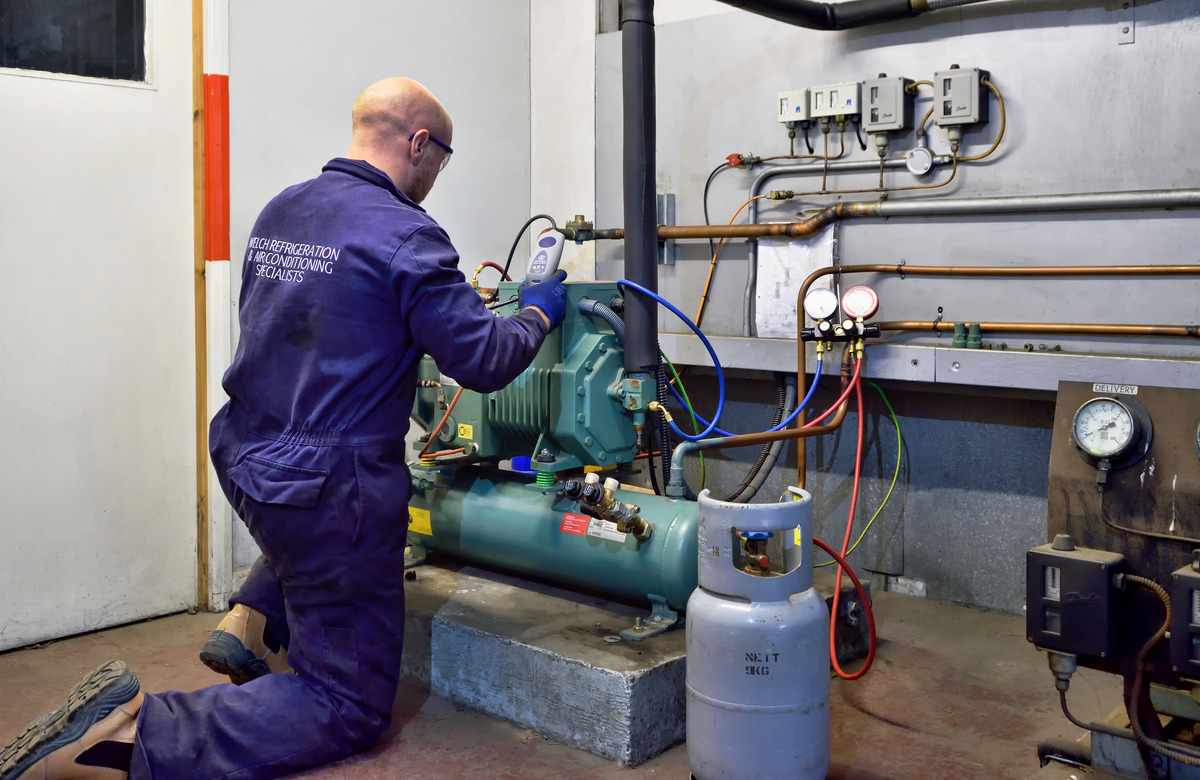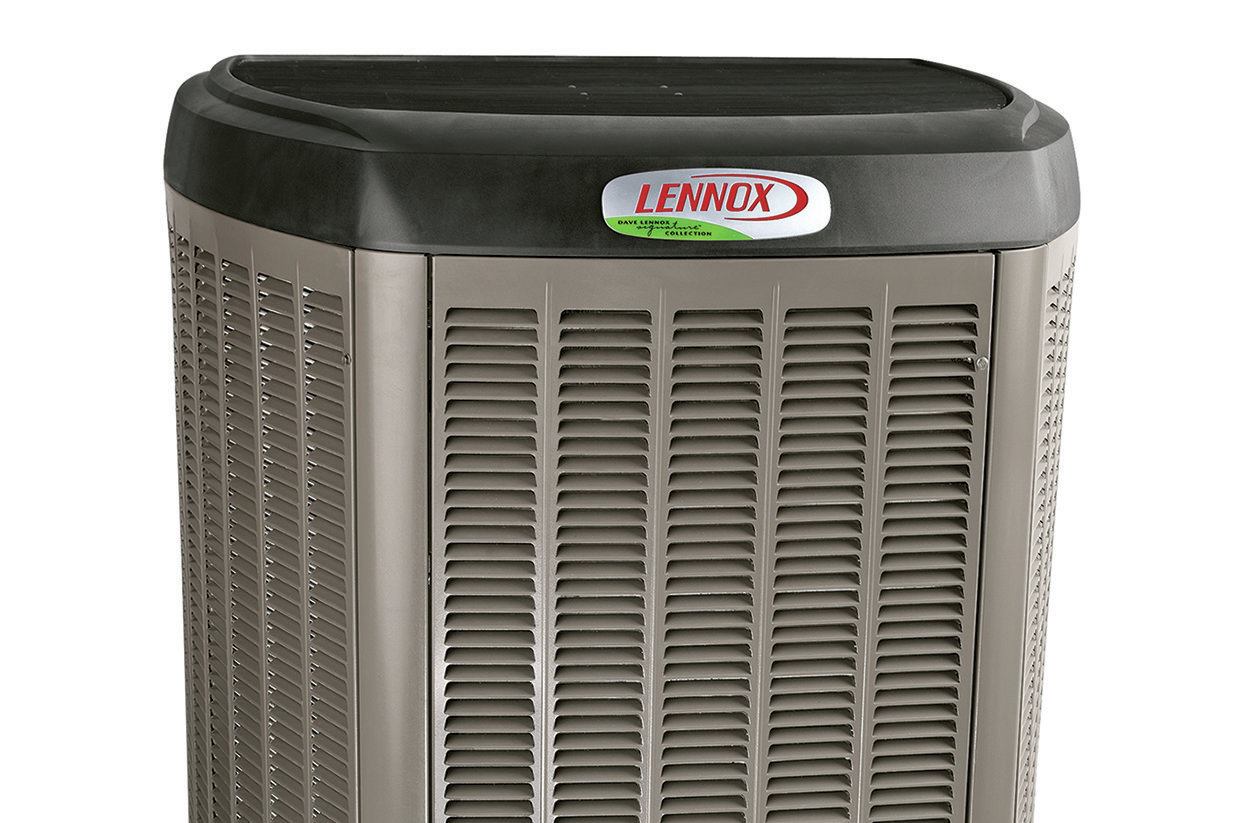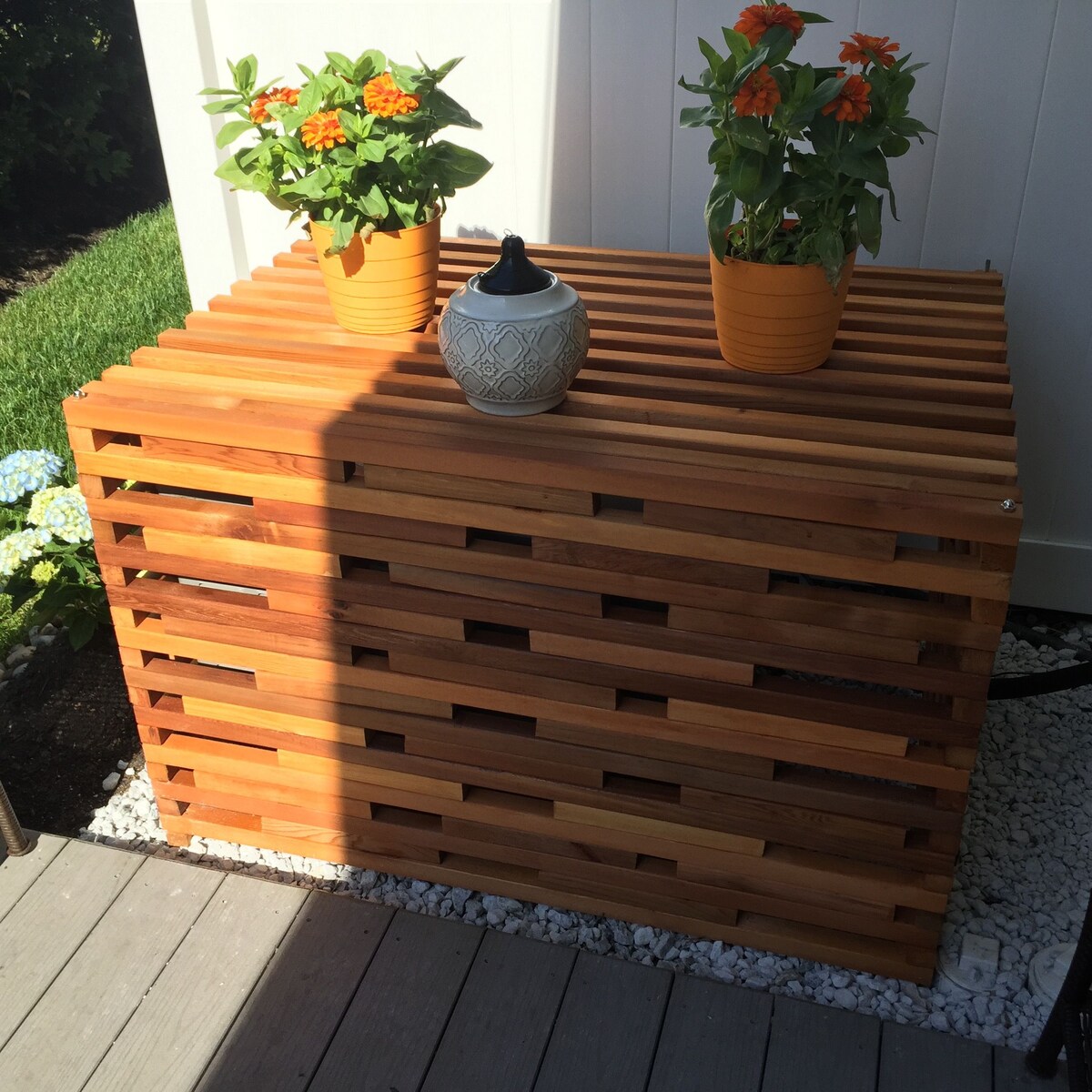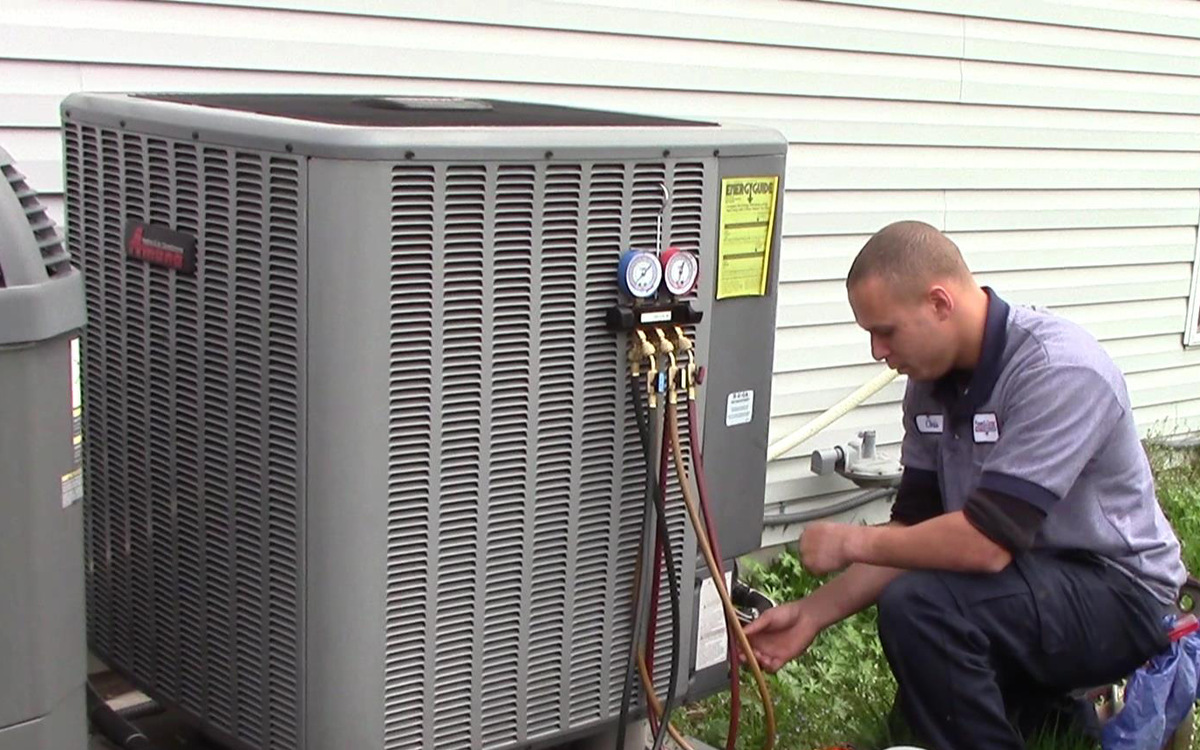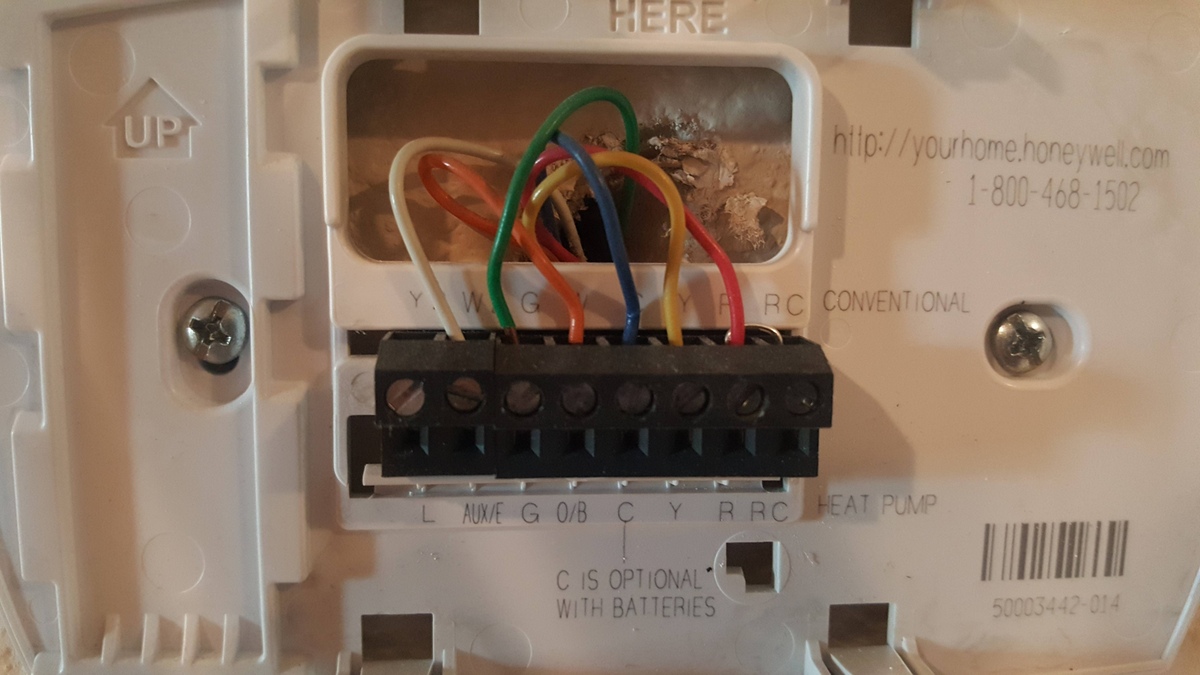Home>Home Maintenance>How To Break Our Dangerous Addiction To Air Conditioning
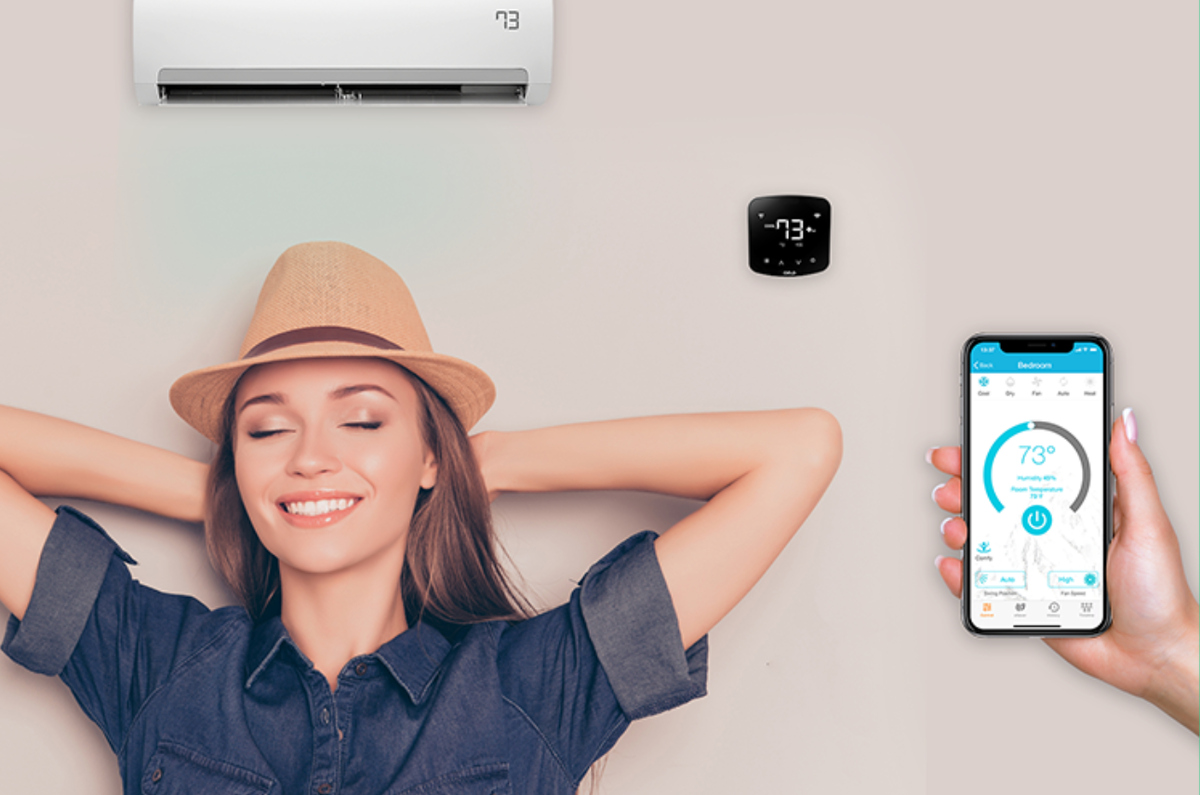

Home Maintenance
How To Break Our Dangerous Addiction To Air Conditioning
Modified: March 6, 2024
Learn how to break your dangerous addiction to air conditioning with our expert home maintenance tips. Save money and reduce your carbon footprint.
(Many of the links in this article redirect to a specific reviewed product. Your purchase of these products through affiliate links helps to generate commission for Storables.com, at no extra cost. Learn more)
Introduction
Welcome to the age of convenience, where air conditioning has become a staple in our lives. We rely on it to keep us cool during scorching summer months, providing relief from the relentless heat. However, our increasing dependence on air conditioning comes at a cost. The environmental impact, health risks, and energy consumption associated with air conditioning are issues that cannot be ignored any longer.
In recent years, there has been growing concern about the ecological footprint of air conditioning. The refrigerants used in most traditional air conditioning units contribute to greenhouse gas emissions, exacerbating the problem of climate change. Furthermore, the excessive energy consumption required to power air conditioners puts a strain on our already overburdened electrical grids.
But it’s not just the environment that suffers. The health risks associated with air conditioning are a cause for concern as well. Spending extended periods in heavily air-conditioned spaces can lead to respiratory problems, such as dryness of the skin and irritation of the throat and eyes. Moreover, the constant fluctuation between extreme temperatures, from the sweltering heat outdoors to the icy coolness indoors, can put a strain on our bodies.
It is crucial that we start rethinking our approach to cooling our homes and buildings. We need to find sustainable alternatives that minimize our reliance on air conditioning while still providing the comfort we seek. This article explores various steps we can take to reduce our dependency on air conditioning and embrace more environmentally friendly and healthier cooling solutions.
From maximizing natural ventilation and airflow to utilizing modern sustainable cooling technologies, there are numerous strategies we can implement to reduce our environmental impact and maintain a comfortable living space. Let’s embark on this journey together and discover how we can break our dangerous addiction to air conditioning.
Key Takeaways:
- Our reliance on air conditioning harms the environment and our health. By embracing natural ventilation, shade, and sustainable cooling technologies, we can stay cool while reducing our impact on the planet.
- Using fans, evaporative coolers, and climate-conscious building design can create comfortable living spaces without the need for excessive air conditioning. It’s time to break our addiction and prioritize sustainable cooling solutions.
The Environmental Impact of Air Conditioning
Air conditioning plays a significant role in contributing to global warming and climate change. The refrigerants used in AC units, such as chlorofluorocarbons (CFCs) and hydrochlorofluorocarbons (HCFCs), have high global warming potential. When released into the atmosphere, these refrigerants trap heat, leading to the greenhouse effect. As a result, the demand for cooling leads to increased emissions of greenhouse gases, exacerbating climate change.
Furthermore, the energy consumption associated with air conditioning contributes to environmental degradation. The majority of air conditioning units rely on fossil fuels for power, such as coal and natural gas. Burning these fuels releases carbon dioxide (CO2), a primary greenhouse gas. The excessive use of air conditioning amplifies the demand for electricity, placing increased pressure on power plants and intensifying the need for fossil fuel consumption. This not only contributes to climate change but also accelerates the depletion of natural resources.
In addition to the direct impact on greenhouse gas emissions, the construction and maintenance of air conditioning systems also have environmental implications. The production of AC units requires the extraction of raw materials and the use of energy-intensive processes, further adding to the carbon footprint. Additionally, improper disposal of the units can lead to the release of harmful substances into the environment, including toxic chemicals from the refrigerants.
To mitigate the environmental impact of air conditioning, it is essential to explore alternative cooling solutions. One approach is to embrace energy-efficient air conditioning systems that use environmentally friendly refrigerants, such as hydrofluorocarbons (HFCs) with lower global warming potential. Additionally, investing in renewable energy sources, such as solar power, can help reduce the carbon footprint associated with powering air conditioners. Implementing proper maintenance and recycling programs for AC units can also minimize waste and prevent the release of harmful substances.
Furthermore, reducing our reliance on air conditioning altogether can significantly lower our environmental impact. By adopting passive cooling strategies and designing energy-efficient buildings that utilize natural ventilation, insulation, and shade, we can create comfortable living and working environments without the need for excessive cooling. These measures not only benefit the environment but also promote energy conservation and lead to long-term cost savings for individuals and communities.
It is crucial for individuals, businesses, and policymakers to recognize the environmental consequences of air conditioning and take steps towards more sustainable cooling solutions. By minimizing our reliance on AC and embracing eco-friendly alternatives, we can contribute to mitigating climate change, preserving natural resources, and creating a healthier planet for future generations.
The Health Risks of Air Conditioning
While air conditioning provides relief from the heat, prolonged exposure to air-conditioned environments can have negative impacts on our health. Understanding and addressing these risks is essential for creating a safe and comfortable living environment.
One of the primary health concerns associated with air conditioning is the dryness it can cause. Air conditioners remove moisture from the air, which can lead to dry skin, dry eyes, and dryness of the respiratory system. This can result in skin irritation, itching, eye discomfort, and an increased susceptibility to respiratory infections. It is particularly problematic for individuals with pre-existing respiratory conditions, such as asthma or allergies.
Moreover, the constant temperature fluctuations between the cool indoor environment and the hot outdoor temperature can put a strain on our bodies. Our bodies need time to acclimate to changes in temperature, and the abrupt shifts caused by moving between extreme temperatures can disrupt our thermoregulation system. This can lead to discomfort, fatigue, and thermal stress.
In addition, air conditioning can worsen indoor air quality. If not properly maintained, AC units can become breeding grounds for bacteria, fungi, and other allergens. The stagnant air circulation can promote the accumulation of dust, pollen, and other particles, which can trigger respiratory allergies and exacerbate asthma symptoms. Furthermore, poorly maintained AC systems can also contribute to the spread of airborne diseases, as they can harbor and recirculate pathogens.
Furthermore, excessive reliance on air conditioning can also lead to a sedentary lifestyle. When the temperature indoors is comfortable, it can discourage individuals from engaging in physical activities and spending time outdoors. Lack of physical activity has numerous detrimental health effects, including obesity, cardiovascular diseases, and reduced overall well-being.
To mitigate the health risks associated with air conditioning, several measures can be taken. First and foremost, it is crucial to maintain proper humidity levels in air-conditioned spaces. Using humidifiers or incorporating plants that naturally release moisture into the air can help combat the dryness caused by AC units. Regular cleaning and maintenance of air conditioning systems are also essential to prevent the growth of bacteria and fungi.
Additionally, it is beneficial to take breaks from air-conditioned environments and spend time outdoors to allow our bodies to adapt to natural temperature fluctuations. Taking advantage of natural ventilation and opening windows when the outdoor temperature allows can also improve indoor air quality and promote fresh airflow.
Lastly, it is important to prioritize a healthy and active lifestyle, even when air conditioning is available. Engaging in regular physical activity and spending time outdoors can help maintain overall well-being and mitigate the negative effects of sedentary behavior.
By being mindful of the potential health risks of air conditioning and implementing appropriate measures, we can create healthier indoor environments and strike a balance between comfort and well-being.
The Energy Consumption of Air Conditioning
As the demand for air conditioning continues to rise, so does the energy consumption associated with cooling our homes and buildings. The excessive energy usage of air conditioning systems has significant environmental and economic consequences, making it crucial to address this issue.
Air conditioning units consume a substantial amount of electricity, especially during hot summer months when the demand for cooling is at its peak. Traditional air conditioners rely on compression refrigeration cycles that require large amounts of energy to cool and dehumidify the air. This puts a strain on electrical grids, leading to increased power generation and higher greenhouse gas emissions from power plants.
According to the U.S. Department of Energy, residential air conditioning accounts for about 6% of the total electricity consumption in the United States. This high energy usage not only contributes to electricity shortages and increased utility bills but also amplifies our dependence on fossil fuels for power generation.
Furthermore, the energy consumed during the manufacturing, transportation, and disposal of air conditioning units adds to their overall environmental impact. The production of AC systems requires the extraction of raw materials, such as metals and plastics, which further depletes natural resources and contributes to carbon emissions. Additionally, improper disposal or recycling of old units can lead to the release of harmful chemicals and pollutants into the environment.
To reduce the energy consumption of air conditioning and promote energy efficiency, several strategies can be implemented. One approach is to invest in high-efficiency air conditioning units that achieve better cooling performance using less energy. Energy Star-certified AC systems, for example, are designed to meet specific energy efficiency criteria set by the U.S. Environmental Protection Agency, ensuring significant energy savings.
In addition to selecting energy-efficient units, it is essential to optimize the usage of air conditioning. This can be done by setting the thermostat at an appropriate temperature, typically around 78°F (25°C), which provides comfort without excessive cooling. Utilizing programmable thermostats can help regulate the temperature based on occupancy, avoiding unnecessary cooling when no one is present.
Moreover, implementing proper insulation measures, such as sealing air leaks and using insulation materials, can minimize heat transfer between indoor and outdoor spaces. This reduces the load on air conditioning systems, leading to lower energy consumption and improved overall energy efficiency.
Another effective method to reduce energy consumption is by utilizing natural ventilation and passive cooling techniques. By strategically opening windows, using external shading, and optimizing airflow through building design, it is possible to reduce the need for artificial cooling. This not only decreases energy usage but also promotes natural airflow and healthier indoor environments.
By prioritizing energy efficiency and adopting sustainable cooling practices, we can significantly reduce the energy consumption of air conditioning, alleviate strain on electrical grids, lower utility bills, and mitigate the environmental impact associated with cooling our living spaces.
Steps Towards Reducing Dependency on Air Conditioning
While air conditioning provides comfort in hot weather, it is crucial to find ways to reduce our dependency on it to minimize the environmental impact, health risks, and energy consumption. By adopting alternative cooling strategies and implementing simple changes in our daily routines, we can create more sustainable and comfortable living environments. Here are some steps towards reducing our dependency on air conditioning:
- Embrace natural ventilation: Open windows and doors to allow fresh air to circulate. Position fans strategically to promote airflow and create a cooling breeze. Utilize cross-ventilation by opening windows on opposite sides of the room or building to maximize the natural flow of air.
- Maximize shade and insulation: Keep curtains, blinds, or shades closed during the day to prevent direct sunlight from heating up your living space. Ensure proper insulation in walls, roofs, and windows to minimize heat transfer and maintain a comfortable indoor temperature.
- Use fans and evaporative coolers: Ceiling fans, standing fans, and portable fans are energy-efficient alternatives to air conditioning. They create a cooling effect by circulating air and can be combined with other techniques like placing a bowl of ice in front of the fan for added refreshment. Evaporative coolers, also known as swamp coolers, use water evaporation to cool the air and can be effective in dry climates.
- Utilize sustainable cooling technologies: Explore eco-friendly cooling options such as geothermal cooling, which utilizes the stable temperature of the ground to cool a building. Solar-powered air conditioning systems are also available, harnessing the energy of the sun to provide cooling without relying on fossil fuels.
- Adopt climate-conscious design practices: When building or renovating, consider sustainable design principles that promote natural ventilation, energy efficiency, and passive cooling techniques. Incorporate features like green roofs, awnings, pergolas, or shading devices to reduce solar heat gain.
- Adjust lifestyle habits: Take advantage of cooler hours in the morning and evening to open windows and let in cool air. Dress in lightweight, breathable clothing, and use natural cooling methods like cold showers or dampening a towel with cool water and placing it on your body. Opt for outdoor activities during the hottest parts of the day and seek shade when needed.
- Plant trees and greenery: Strategic planting of trees and vegetation around buildings can provide shade, reduce surface temperatures, and cool the surrounding area. Trees also absorb carbon dioxide and release oxygen, improving air quality and overall comfort.
- Educate and raise awareness: Spread knowledge about the environmental and health impacts of air conditioning and the benefits of reducing its usage. Encourage individuals, businesses, and policymakers to prioritize sustainable cooling solutions and support initiatives that promote energy efficiency.
By implementing these steps, we can minimize our dependency on air conditioning while still ensuring comfortable living environments. Reducing our reliance on AC not only benefits the environment but also saves energy and reduces utility costs. It is time to embrace alternative cooling methods and work towards a more sustainable future.
Read more: How To Air Condition A Shed
Increasing Natural Ventilation and Airflow
Natural ventilation is a highly effective and energy-efficient way to cool indoor spaces. By increasing airflow and allowing fresh air to circulate, we can create a comfortable and healthier environment without relying heavily on air conditioning. Here are some strategies to increase natural ventilation:
- Open windows and doors: One of the simplest ways to enhance natural ventilation is to open windows and doors. By allowing fresh air to enter and the stale air to exit, you can create a pleasant breeze and improve indoor air quality.
- Position windows strategically: Consider the layout and orientation of your building when positioning windows. Placing windows on opposite sides or adjacent walls promotes cross-ventilation, allowing air to flow through the space more effectively.
- Install operable windows: Opt for windows that can be opened, such as casement windows or louvers. This provides greater control over airflow and makes it easier to adjust ventilation based on weather conditions.
- Use window accessories: Utilize window screens, window blinds, or window vents to regulate the amount of air entering the space. These accessories allow for air circulation while protecting against insects, minimizing direct sunlight, or controlling airflow direction.
- Make use of ventilation shafts or chimneys: In buildings with multiple floors, the use of ventilation shafts or chimneys can help facilitate the upward movement of warm air and draw in cooler air from lower levels. This natural stack effect can enhance ventilation and cooling.
- Incorporate skylights or roof vents: Skylights and roof vents provide an additional source of natural ventilation. They allow hot air to escape from the top of the building, drawing in fresh air from lower areas and creating a cooling airflow.
- Consider wind-catching features: In areas with a consistent breeze, wind-catchers or wind towers can be incorporated into building designs. These architectural features help capture and direct natural wind to enhance ventilation and cooling.
- Utilize interior design techniques: Arrange furniture and objects in a way that doesn’t obstruct the airflow. Keep large items away from windows, and avoid blocking air pathways throughout the space.
- Plant trees strategically: Planting trees or vegetation around your building can create a natural barrier against direct sunlight and help channel airflow. Additionally, trees release moisture through transpiration, which can further enhance cooling through evaporative cooling effects.
Increasing natural ventilation not only reduces the need for air conditioning but also improves indoor air quality by removing stagnant air and potential pollutants. It also provides a connection to the outdoors, creating a more inviting and refreshing living environment. By incorporating these strategies and utilizing the power of nature, we can enhance airflow and create comfortable, energy-efficient spaces that are conducive to our well-being.
Use fans and natural ventilation to cool your home instead of relying solely on air conditioning. Close curtains during the hottest part of the day to block out the sun’s heat.
Maximizing Shade and Insulation
Shade and insulation play crucial roles in maintaining a comfortable indoor temperature and reducing the need for excessive air conditioning. By maximizing shade and enhancing insulation, we can minimize heat gain and conserve energy. Here are some strategies to consider:
- Install window coverings: Utilize blinds, curtains, or shades to block out direct sunlight during the hottest parts of the day. This prevents solar heat gain and keeps your space cooler. Choose light-colored or reflective materials to further enhance their heat-blocking capabilities.
- Use external shading devices: Implement exterior shading devices like awnings, pergolas, or shutters to provide shade and protection from the sun. These structures can be adjustable to allow for sunlight during cooler times or seasons.
- Plant trees and use vegetation: Strategically plant tall trees or use climbing vines to create natural shade around your building. Trees with broad canopies provide excellent shade, reducing the amount of direct sunlight that enters your space.
- Utilize shading films or window tinting: Apply window films or tinting to reduce solar heat gain and minimize the amount of ultraviolet (UV) radiation entering your space. This helps maintain a comfortable indoor temperature while protecting furniture and furnishings from UV damage.
- Seal air leaks: Inspect your space for air leaks and seal them properly. Use weatherstripping to seal gaps around windows and doors, and caulk any cracks or openings in walls. This prevents warm air from infiltrating your space and keeps cool air from escaping.
- Enhance insulation: Insulate your building’s walls, roof, and floors to reduce heat transfer. Use insulation materials with high thermal resistance, such as fiberglass, cellulose, or foam. This helps maintain a stable indoor temperature and reduces the need for active cooling.
- Consider cool roofs: Install cool roofs or apply reflective coatings to existing roofs to reduce solar heat absorption. Cool roofs reflect sunlight and help keep the building cooler, reducing the need for air conditioning.
- Use thermal curtains or blinds: Install thermal curtains or blinds that have insulating properties. These curtains have layers that provide additional insulation, helping to keep heat out during the summer and retain warmth during the winter.
- Optimize building orientation: When designing or renovating a building, consider the orientation to ensure maximum shade. Align windows and openings in a way that minimizes exposure to direct sunlight, especially on the west and south-facing sides, where the sun’s rays are strongest.
Maximizing shade and insulation is an effective way to reduce energy consumption and create a more comfortable living environment. By incorporating these strategies, we can minimize heat gain, maintain cooler indoor temperatures, and reduce the reliance on air conditioning. This not only benefits the environment but also helps to lower energy costs and improve overall comfort in our homes and buildings.
Using Fans and Evaporative Coolers
Fans and evaporative coolers are excellent alternatives to traditional air conditioning units, providing efficient and cost-effective cooling options. By utilizing these devices, we can maintain comfortable indoor temperatures while reducing energy consumption. Let’s delve into how fans and evaporative coolers can help keep us cool:
- Ceiling fans: Ceiling fans are a popular choice for cooling homes and offices. They create a gentle breeze that promotes evaporative cooling on the skin, making us feel cooler without actually lowering the room temperature. Ceiling fans can be used in combination with other cooling methods to enhance their effectiveness.
- Standing fans and portable fans: Standing fans and portable fans are versatile options that can be easily moved to different areas of a room or building. They circulate the air and create a cooling effect through the evaporative cooling process. Placing a bowl of ice in front of the fan can further enhance the cooling sensation.
- Window fans: Window fans are designed to be mounted in open windows. They draw in fresh air from the outdoors and help exhaust stale and warm air from the room. By strategically positioning window fans, you can create a cross-ventilation effect that enhances natural airflow and cools the space.
- Portable evaporative coolers: Evaporative coolers, also known as swamp coolers, are highly effective in arid climates. They work by blowing air over water-soaked pads, causing the water to evaporate and cool the air. Portable evaporative coolers can be used in specific rooms or moved around as needed, providing a cost-effective and energy-efficient cooling solution.
- Whole-house evaporative coolers: For larger spaces or homes, whole-house evaporative coolers, also known as central swamp coolers, can be installed. These systems use ducts to distribute cool air throughout the entire building. They consume less energy compared to conventional air conditioning systems and can provide significant energy savings.
- Hybrid systems: Some advanced cooling systems combine the use of fans and evaporative cooling technology. These hybrid systems provide a combination of direct cooling through the evaporative process and air circulation through fans to create a comfortable environment.
When using fans and evaporative coolers, it is essential to consider outdoor humidity levels. While fans are effective in most climates, evaporative coolers are most efficient in dry climates where the air has low humidity. The water evaporation process in evaporative coolers adds moisture to the air, which can increase humidity levels indoors.
These cooling methods are energy-efficient and can significantly reduce electricity consumption compared to air conditioning units. They provide a more sustainable and environmentally friendly approach to cooling our living spaces. Additionally, fans and evaporative coolers can be used in combination with natural ventilation techniques, maximizing the cooling effect and maintaining a comfortable indoor environment.
By utilizing fans and evaporative coolers, we can stay cool while reducing our carbon footprint and energy costs. These devices offer a practical and sustainable cooling solution that can be tailored to individual needs and preferences.
Utilizing Sustainable Cooling Technologies
As society becomes more aware of the need for sustainable practices, innovative cooling technologies have emerged as environmentally friendly alternatives to traditional air conditioning. These sustainable cooling technologies harness renewable energy sources and utilize innovative designs to provide efficient and eco-friendly cooling solutions. Let’s explore some of these technologies:
- Geothermal cooling: Geothermal cooling systems utilize the stable temperatures found underground to cool buildings. This technology circulates a fluid through underground pipes to extract heat from the building and transfer it into the cooler ground. Geothermal cooling systems are highly efficient and rely on renewable geothermal energy, resulting in significant energy savings.
- Solar-powered air conditioning: Solar-powered air conditioning systems utilize the sun’s energy to power the cooling process. Photovoltaic (PV) panels convert solar energy into electricity, which can be used to operate air conditioning units. These systems allow for comfortable cooling without relying on fossil fuels, reducing both energy consumption and carbon emissions.
- Thermally driven cooling systems: Thermally driven cooling systems use low-grade heat sources, such as waste heat or solar collectors, to power the cooling process. These systems employ absorption or adsorption technologies to provide cooling without the need for traditional compressors or refrigerants. They offer an energy-efficient and sustainable alternative for cooling applications.
- Radiant cooling: Radiant cooling systems cool indoor spaces by circulating chilled water through pipes installed in walls, ceilings, or floors. The cool surfaces then radiate thermal energy, creating a comfortable cooling effect in the surrounding area. Radiant cooling is energy efficient and provides precise temperature control while maintaining low airflow and improving indoor air quality.
- Phase change material (PCM) cooling: PCM cooling utilizes materials that can absorb and release heat to regulate indoor temperatures. These materials have the ability to change their phase from solid to liquid and vice versa, allowing them to absorb heat when the temperature rises and release it when the temperature drops. PCM cooling reduces the need for active cooling and can be incorporated into building elements such as walls, ceilings, or flooring.
- Evaporative cooling towers: Evaporative cooling towers utilize water evaporation to cool air and provide efficient cooling for large spaces. These towers are particularly effective in hot and dry climates. As water evaporates, it absorbs heat from the surrounding air, resulting in cooler temperatures. Evaporative cooling towers can be used in commercial and industrial settings to reduce energy consumption and enhance sustainability.
- Smart cooling systems: Smart cooling systems utilize advanced technologies, such as sensors, data analytics, and machine learning, to optimize energy usage and enhance cooling performance. These systems can automatically adjust cooling settings based on occupancy, weather conditions, and energy demand, resulting in energy savings and improved comfort.
By embracing these sustainable cooling technologies, we can reduce our dependence on conventional air conditioning units and minimize energy consumption. These innovative solutions offer efficient cooling while utilizing renewable energy sources, reducing greenhouse gas emissions, and contributing to a more sustainable future.
It is important to explore and invest in these technologies to accelerate the transition towards a greener and more environmentally friendly cooling paradigm. Governments, businesses, and individuals all have a role to play in adopting and promoting these sustainable cooling technologies to mitigate the environmental impact of cooling our living spaces.
Read more: How Is Air Conditioning Powered
Adopting Climate-conscious Design Practices
Climate-conscious design practices play a crucial role in creating sustainable and energy-efficient buildings that require less reliance on traditional air conditioning. By incorporating innovative design strategies and considering the local climate, we can optimize natural ventilation, minimize heat gain, and create comfortable indoor environments. Here are some climate-conscious design practices to consider:
- Building orientation: Properly orienting a building can maximize natural light and ventilation while minimizing solar heat gain. Orienting windows, facades, and rooflines to maximize shade during the hottest parts of the day helps to reduce the need for artificial cooling.
- Passive cooling techniques: Passive cooling techniques utilize natural elements and design strategies to keep indoor spaces cool. These techniques include incorporating shading devices, such as overhangs or fins, to block direct sunlight; using light-colored materials and high-reflectivity surfaces to reduce heat absorption; and designing buildings with thermal mass to absorb and release heat slowly.
- Natural ventilation: Designing buildings with natural ventilation in mind allows for the free flow of air and a continuous exchange of fresh air. This can be achieved through strategic placement of windows, vents, and openings that promote cross-ventilation and stack effect, facilitating the movement of air to cool the indoor environment.
- Green roofs and walls: Green roofs and walls utilize vegetation to provide an additional layer of insulation and reduce heat absorption. The plants contribute to natural cooling through shading, transpiration, and evapotranspiration processes while improving air quality and enhancing the visual appeal of the building.
- Solar shading: Designing buildings with effective solar shading strategies helps block direct sunlight and minimize heat gain. This can be achieved through the use of overhangs, awnings, louvers, or specialized glazing systems that selectively control the amount of heat and light entering the building.
- Energy-efficient building materials: Using energy-efficient building materials, such as low-emissivity (low-e) glass, insulation with high thermal resistance, and sustainable building products, can significantly reduce heat transfer and improve energy efficiency.
- Integration of renewable energy sources: Incorporating renewable energy sources, such as solar panels or wind turbines, into the building design can help power cooling systems and reduce reliance on carbon-intensive energy sources.
- Smart building technologies: Implementing smart technologies like building automation systems and sensors can optimize energy usage, monitor indoor air quality, and adapt cooling settings based on occupancy and weather conditions. This allows for efficient and responsive cooling while minimizing energy waste.
- Life-cycle assessment: Conducting a life-cycle assessment of the building design helps evaluate the environmental impact of the materials used, the energy consumed during construction, and the building’s overall sustainability performance. This assessment ensures that the design aligns with sustainable and climate-conscious goals.
By adopting climate-conscious design practices, architects, engineers, and builders can create buildings that respond to their unique climatic conditions, reduce energy consumption, and provide comfortable and healthy indoor environments. These practices not only contribute to environmental sustainability but also result in long-term cost savings and increased occupant satisfaction.
It is essential for stakeholders in the construction industry to prioritize climate-conscious design, promote green building certifications, and advocate for sustainable building practices to create a more sustainable and resilient built environment. By embracing these practices, we can pave the way for a future where our buildings harmonize with nature and contribute to a more sustainable planet.
Conclusion
Our dependence on air conditioning has led to significant environmental, health, and energy challenges. However, by taking proactive steps and adopting sustainable practices, we can reduce our reliance on air conditioning while still staying cool and comfortable. The key is to embrace alternative cooling strategies that are energy-efficient, environmentally friendly, and health-conscious.
From increasing natural ventilation and maximizing shade and insulation to utilizing fans, evaporative coolers, and sustainable cooling technologies, there are numerous pathways towards achieving a more sustainable and comfortable living environment.
By incorporating climate-conscious design practices, we can create buildings that optimize natural resources, maximize energy efficiency, and promote indoor comfort. Additionally, adopting simple lifestyle changes such as adjusting clothing choices, taking advantage of cooler hours, and embracing outdoor activities can also help in reducing the need for artificial cooling.
It is important for individuals, businesses, and policymakers to recognize the collective impact of our cooling choices and work towards more sustainable solutions. By raising awareness about the environmental and health consequences of air conditioning and promoting energy-conscious alternatives, we can foster a culture of responsible cooling practices.
Reducing our dependency on air conditioning not only benefits the planet by reducing greenhouse gas emissions and conserving energy, but also improves our health and well-being. Creating indoor environments that prioritize natural airflow, fresh air circulation, and comfortable temperatures can enhance our quality of life and contribute to long-term sustainability.
In conclusion, breaking our dangerous addiction to air conditioning requires a shift in mindset and behavior. By embracing sustainable cooling practices, we can create a more environmentally responsible and resilient future. Let us embark on this journey together and prioritize cooling solutions that provide comfort, conserve energy, and preserve our planet for future generations.
Frequently Asked Questions about How To Break Our Dangerous Addiction To Air Conditioning
Was this page helpful?
At Storables.com, we guarantee accurate and reliable information. Our content, validated by Expert Board Contributors, is crafted following stringent Editorial Policies. We're committed to providing you with well-researched, expert-backed insights for all your informational needs.

